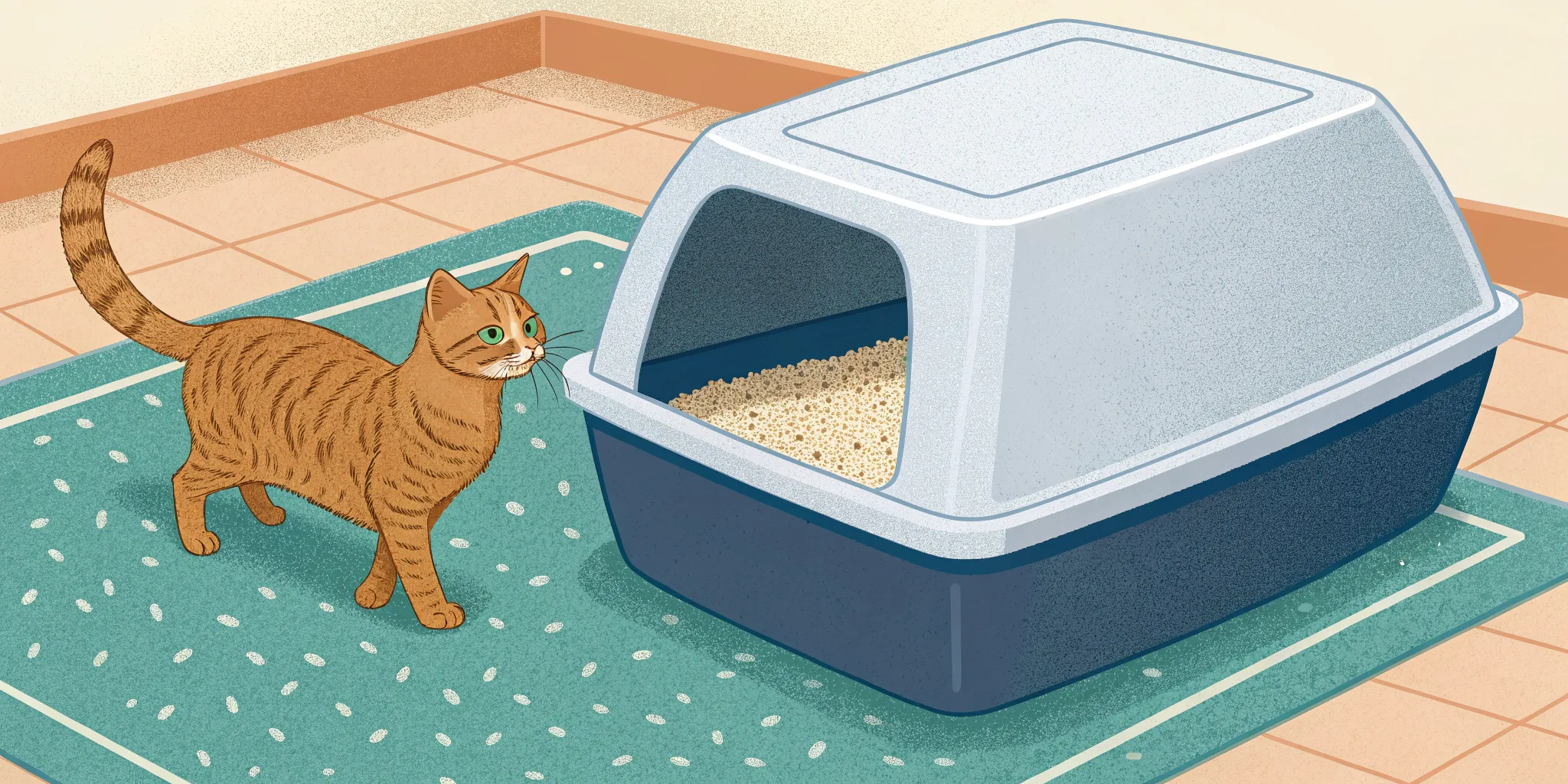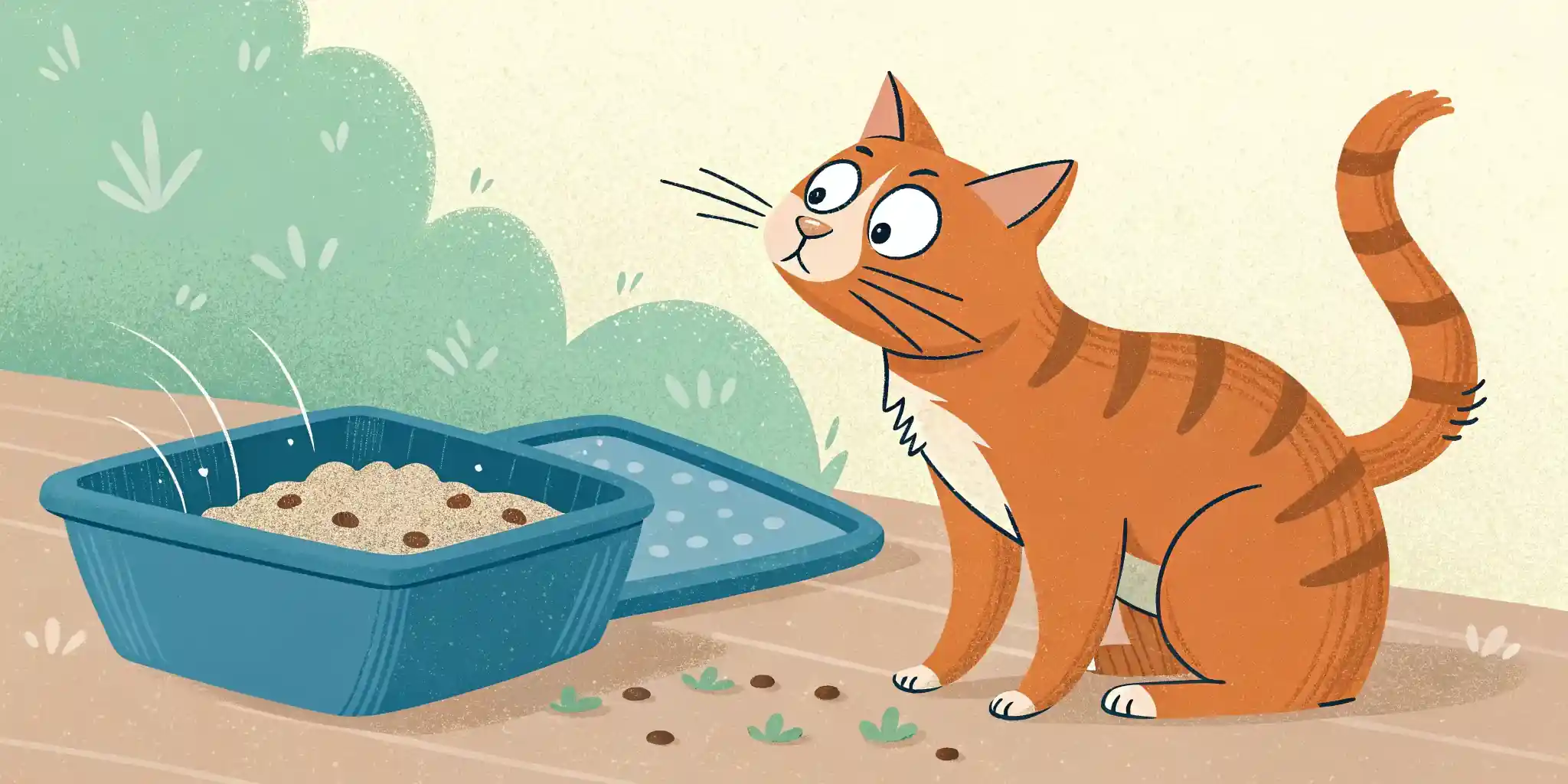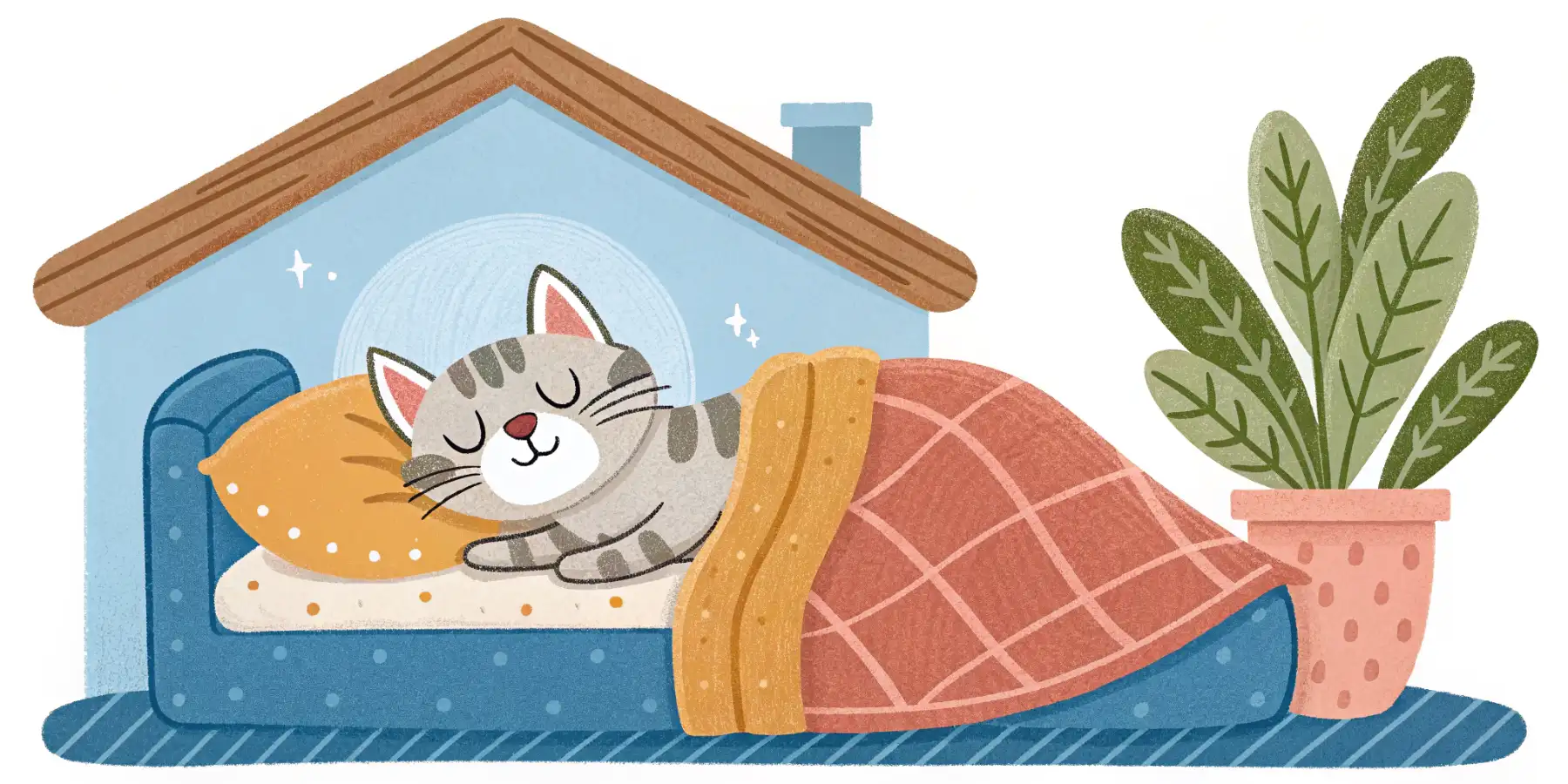
Happy Cat, Happy Home: Litter Box Bliss
Is your cat unhappy? 😿 Litter box issues can cause stress! Learn easy tips for **litter box management** and a happier kitty. Read more!
Litter Box Management for Adult Cats: Maintaining Cleanliness and Addressing Problems
Let’s face it, no one loves dealing with the litter box. But as cat owners, it’s a duty we accept as part of the package deal of unconditional feline love (and the occasional sassy attitude). Proper litter box management is absolutely crucial not only for your cat’s hygiene but also for their overall well-being and your sanity. A clean, accessible litter box translates to a happy, healthy cat, and a less stressed-out human. And trust me, an unhappy cat will find creative ways to express their displeasure – and you won’t like it.
 A clean, well-maintained litter box is essential for your cat’s hygiene and comfort. Regular scooping and cleaning can prevent litter box aversion.
A clean, well-maintained litter box is essential for your cat’s hygiene and comfort. Regular scooping and cleaning can prevent litter box aversion.
Choosing the Right Litter Box
The first step towards stellar litter box management is selecting the right type. There’s no one-size-fits-all answer, as cats can be surprisingly particular. I’ve seen cats turn their noses up at fancy, self-cleaning contraptions and happily use a simple, inexpensive plastic box.
-
Size Matters: The general rule of thumb is that the litter box should be at least 1.5 times the length of your cat. This allows them to comfortably turn around and dig.
-
Open vs. Covered: Some cats prefer open litter boxes, while others prefer the privacy of a covered one. I believe that open boxes are generally better because they provide better ventilation, reducing ammonia buildup. However, if your cat sprays, a covered box might be the better option.
-
Multiple Cats, Multiple Boxes: This is a golden rule: you should have one litter box per cat, plus one extra. So, if you have two cats, you need three litter boxes. This prevents competition and reduces stress. Spreading the boxes throughout the house can make it easier for all cats to access a box when needed.
-
Automatic Litter Boxes: These can be a great investment if you have the budget and are short on time. They automatically scoop the waste, reducing odor and keeping the litter fresher. However, be sure to introduce your cat to the automatic litter box gradually, allowing them to get used to the sound and movement.
Selecting the Right Type of Cat Litter
Just as important as the box itself is the litter you choose. The variety can be overwhelming, so here’s a breakdown:
-
Clay Litter: This is the most common and affordable type. However, it can be dusty and doesn’t always control odor effectively. I’ve found that clumping clay litter is generally preferable to non-clumping.
-
Clumping Litter: Made from clay or other materials, clumping litter forms solid clumps when wet, making it easier to scoop.
-
Crystal Litter: Highly absorbent and good at odor control, but can be expensive. Some cats dislike the texture.
-
Natural Litters: These include options like wood, paper, corn, and wheat. They are often biodegradable and eco-friendly. Many of my clients have found success switching to these litters, especially for cats with allergies or respiratory issues.
-
Scented vs. Unscented: Opt for unscented litter. Cats have sensitive noses, and strong fragrances can be off-putting.
The Importance of Regular Scooping and Cleaning - Long-tail keyword: How often to clean a cat litter box.
This is where the rubber meets the road. No matter how fancy your litter box or litter, regular scooping and cleaning are non-negotiable.
-
Scoop Daily: At a minimum, scoop the litter box at least once a day. More frequent scooping is even better.
-
Complete Litter Change: Every 2-4 weeks, completely empty the litter box, wash it with warm water and mild soap (avoid harsh chemicals!), and refill it with fresh litter.
-
Deep Cleaning: At least twice a year, disinfect the litter box with a diluted bleach solution (1 part bleach to 32 parts water). Rinse thoroughly and allow to air dry completely before refilling.
 Daily scooping is crucial for maintaining a clean and hygienic litter box. Regular scooping also helps to monitor your cat’s urine and stool for any abnormalities.
Daily scooping is crucial for maintaining a clean and hygienic litter box. Regular scooping also helps to monitor your cat’s urine and stool for any abnormalities.
Addressing Litter Box Problems
Litter box aversion is a common issue. The key to resolving litter box problems is to identify the underlying cause.
-
Medical Issues: The first step is always to rule out any medical problems. Urinary tract infections (UTIs), bladder stones, and arthritis can all make it painful or difficult for your cat to use the litter box. A visit to the vet is essential.
-
Stress and Anxiety: Cats are creatures of habit, and changes in their environment can cause stress. This can lead to litter box avoidance.
-
Location, Location, Location: Make sure the litter box is in a quiet, accessible location, away from food and water.
-
Too Few Litter Boxes: As mentioned earlier, make sure you have enough litter boxes for the number of cats in your household.
-
Unpleasant Litter Box: Is the litter box dirty? Is the litter too dusty? Is the scent too strong? Address these issues to make the litter box more appealing.
-
Litter Box Bullying: If you have multiple cats, one cat might be preventing another from using the litter box. Provide multiple litter box locations and ensure each cat has a safe and private space to eliminate.
-
Old Age: As cats age, they may have mobility issues that make it difficult to get into a standard litter box. Consider a litter box with lower sides.
Cat peeing outside litter box remedies
If your cat is already peeing outside the litter box, don’t despair! Here are a few strategies you can try:
- Clean the soiled areas thoroughly: Use an enzymatic cleaner to remove all traces of odor.
- Add an extra litter box: This can give your cat more options.
- Try a different type of litter: Your cat might simply not like the current litter.
- Make the litter box more appealing: Ensure it’s clean, accessible, and in a quiet location.
- Consult with your veterinarian: They can help rule out any medical issues and provide further guidance.
 A cat hesitant to use a dirty litter box. Addressing your cat’s litter box aversion promptly is essential to prevent it from becoming a long-term behavioral issue.
A cat hesitant to use a dirty litter box. Addressing your cat’s litter box aversion promptly is essential to prevent it from becoming a long-term behavioral issue.
Conclusion: A Happy Cat, A Happy Home
Effective litter box management for adult cats might seem like a small detail, but it makes a huge difference in your cat’s well-being and your relationship with them. By providing a clean, accessible, and comfortable litter box, you’re showing your cat that you care about their needs. And a happy cat makes for a happy home. So, scoop on, my friends, and enjoy the purrs and cuddles that come with a well-maintained litter box! Remember to address the specifics of cat litter box placement in small apartments. This can make a world of difference for your cat.


